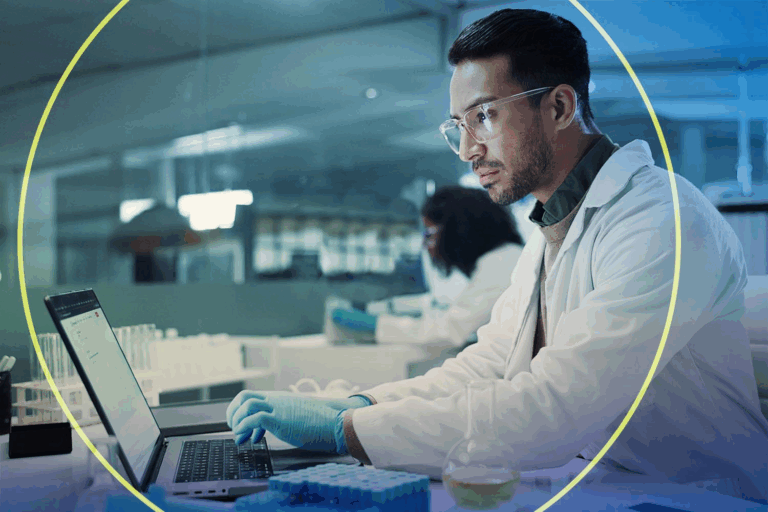For decades, biopharma R&D has been a journey of monumental scientific discovery, often defined by slow, methodical steps and high-risk milestones. But a new era is upon us, powered by artificial intelligence. Our latest whitepaper, Artificial Intelligence in Life Sciences, dives deep into this transformation, revealing a landscape that is both groundbreaking and complex.
The key finding? This revolution isn’t a one-size-fits-all event. Instead, it’s a bifurcated journey, with large biopharma companies aggressively investing to reinvent R&D and compress timelines, while smaller companies are taking a more cautious, phased approach, focusing on foundational readiness and quality improvements.
From Hype to Quantifiable Successes
AI’s value is no longer just a futuristic promise; it’s a present-day reality. Our report highlights several key successes and initiatives:
- Clinical Trials Success: Drugs designed with AI are showing a higher success rate in Phase 1 trials, de-risking the pipeline and providing a significant edge over traditional methods.
- Operational Efficiency: The technology is boosting efficiency beyond the lab, reducing equipment breakdown time in manufacturing and increasing forecast accuracy in supply chain management.
- The “Lab in a Loop”: We’re seeing the rise of self-driving labs where AI and robotic experiments continuously learn from each other in a feedback loop, accelerating the discovery cycle with unprecedented speed.
The Power of Proprietary Data
The real competitive advantage doesn’t come from generic, public AI models. It comes from scientifically aware AI—models trained on a company’s unique, proprietary datasets. The vast majority of biopharma data is private, and the ability to leverage this exclusive knowledge is what will separate the leaders from the rest. The report also introduces the next frontier: multimodal AI, a powerful technology that unites diverse data types like genomics and molecular data to reveal hidden patterns.
Navigating the Roadblocks
Despite the promise, significant hurdles remain. We identified three major challenges holding the industry back:
- The Talent Gap: A critical shortage of skilled AI/ML professionals is a primary bottleneck.
Solution: Use visual, no-code environments to design and deploy AI and machine-learning technologies to your organization. - Data Fragmentation: Data silos and a lack of connectivity between lab instruments and software prevent the seamless data flow needed for robust AI.
Solution: Use a fully integrated, digital lab solution that connects directly to lab equipment and standardizes data. - The Wet-to-Dry Lab Divide: The biggest challenge for large companies is uniting the physical data from the wet lab with the computational data and workflows of the dry lab—a problem that requires a fundamental organizational shift.
Solution: Use an end-to-end platform that unites virtual and real data together, accelerating the data feedback loop.
Companies using BIOVIA solutions in the lab report that the data generated this way is the most “AI-ready” data in their organization.
Your Roadmap to the Future
The path forward is clear. It requires a strategic, phased approach. Organizations must first establish a foundational readiness by adopting R&D data platforms, then move to scale-up with pilot projects, and finally, achieve advanced readiness by uniting their virtual and real-world workflows.
Ready to dive deeper and get the full story?
Stay informed on the latest advances in AI and biopharma R&D—join our monthly BIOVIA newsletter

